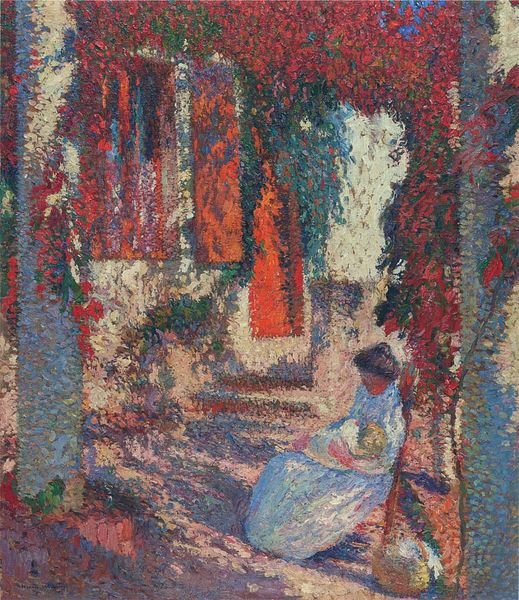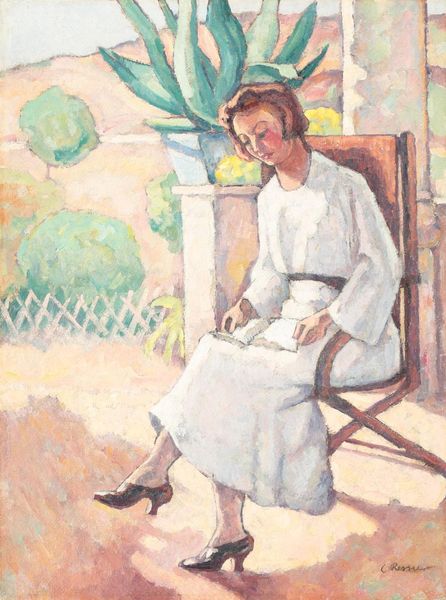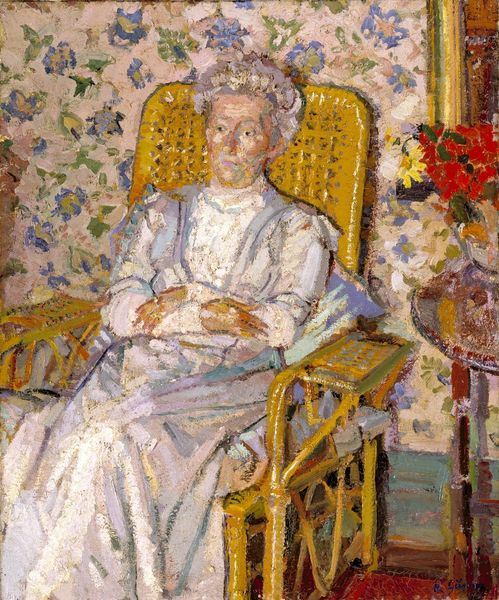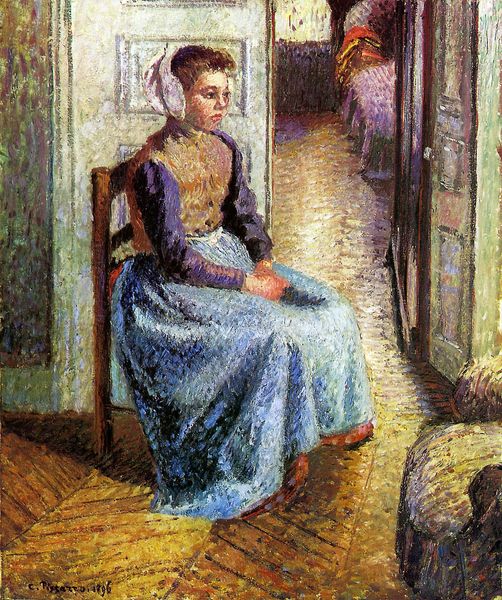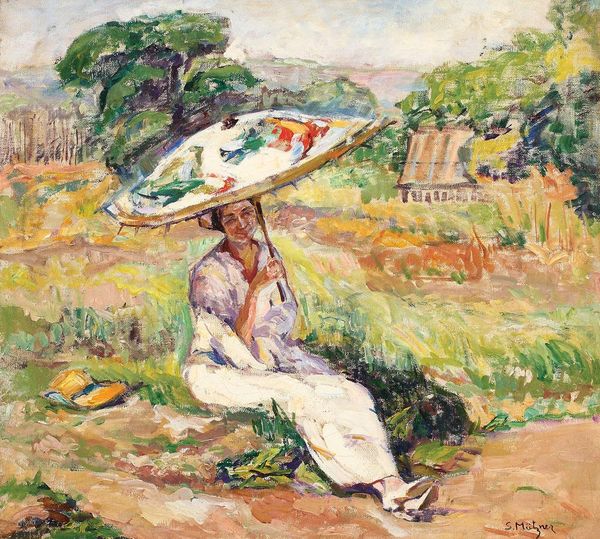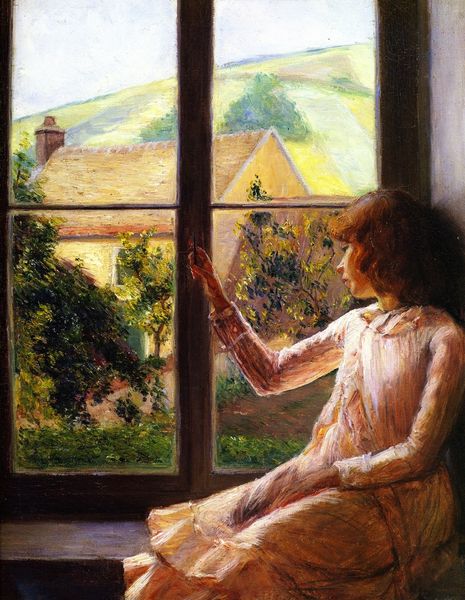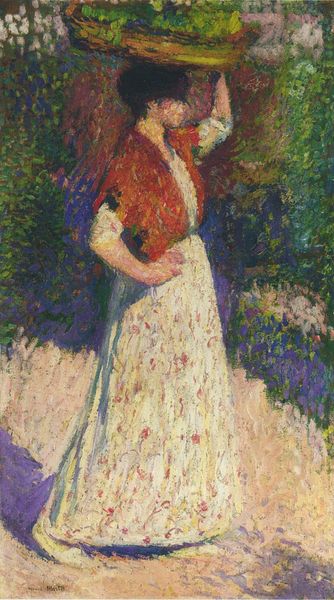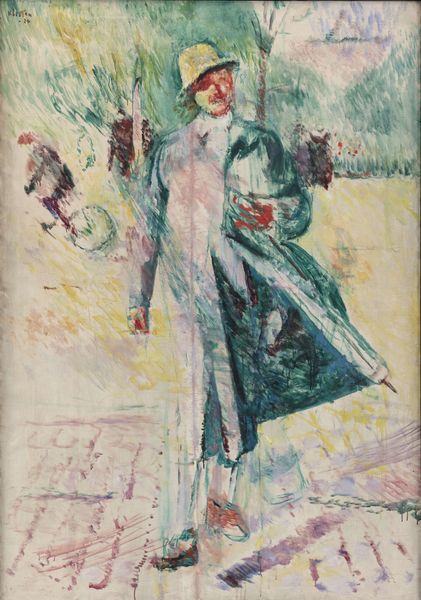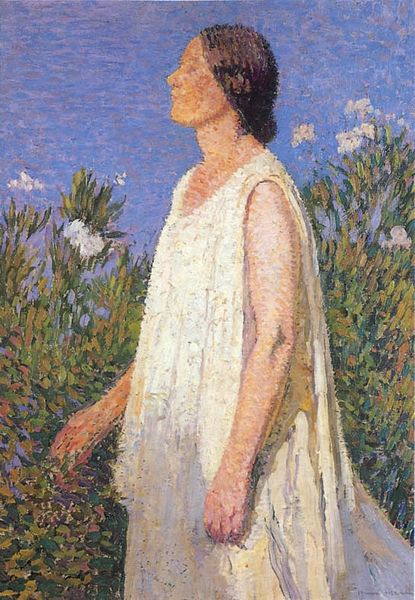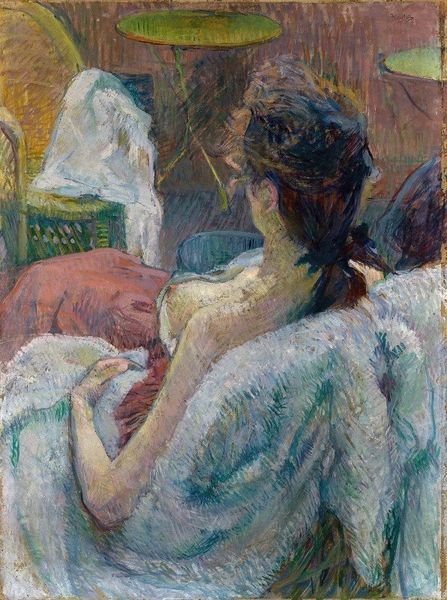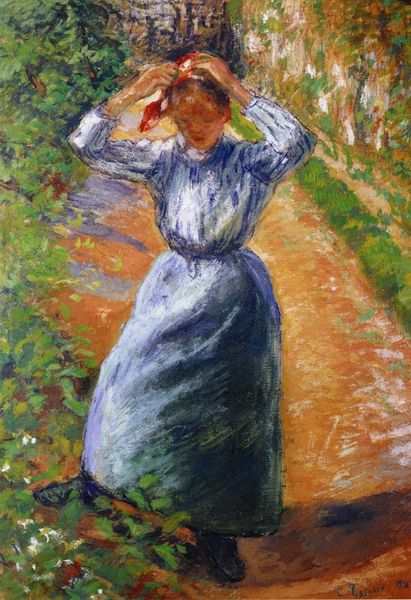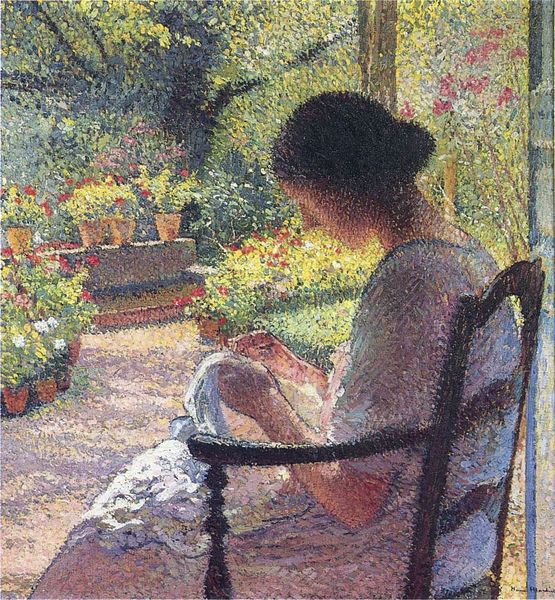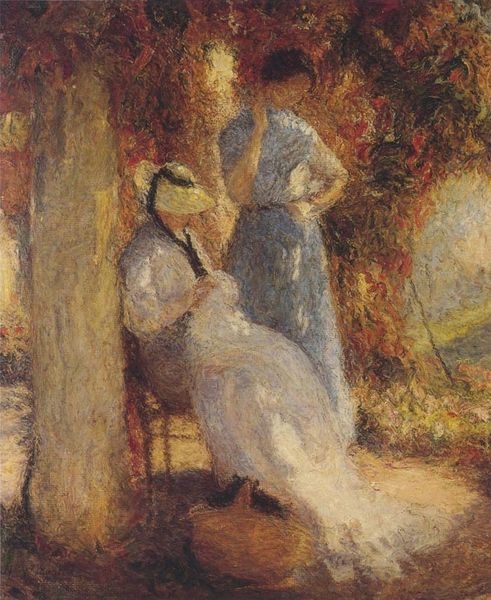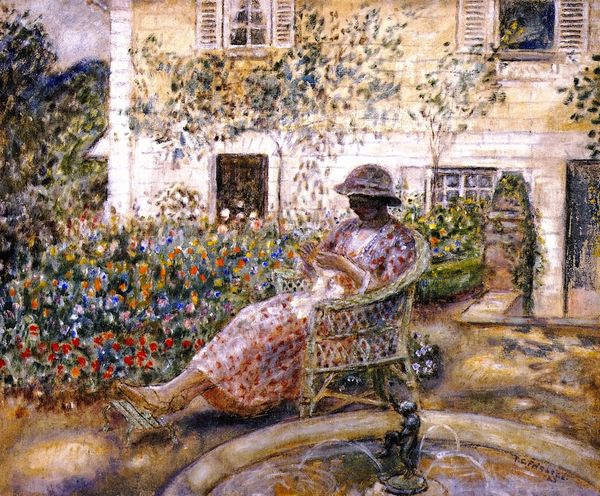
Dimensions: 65 x 81 cm
Copyright: Public domain
Maximilien Luce painted Madame Luce on the Balcony, an oil on canvas, sometime in the late 19th or early 20th century. The canvas is dominated by a figure of a woman and saturated in small strokes of vibrant color. The materiality of the paint and the composition—the balcony as a dividing foreground element—create a sense of distance, a threshold between the viewer and the subject. Luce was a Neo-Impressionist, committed to a scientific approach to painting, using pointillism, a technique where juxtaposed dots of pure color create an image in the viewer's eye. This method is evident in the way the light shimmers across the scene, breaking down forms into their chromatic components. Consider the balcony itself: it's not just a structural element but a signifier of bourgeois life. What does it mean to see Madame Luce positioned here, gazing outward? Luce’s work encourages us to consider the interplay between the individual and their environment. The composition asks: does the fragmented brushwork reflect a fragmented modern identity? By resisting clear, representational form, Luce invites us to question what we see and how we see it.
Comments
No comments
Be the first to comment and join the conversation on the ultimate creative platform.
